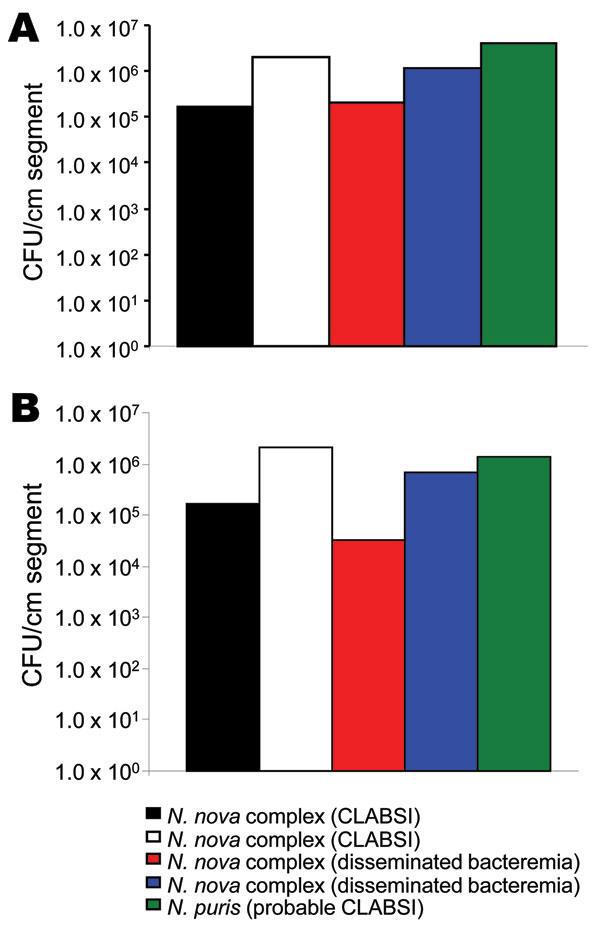Volume 17, Number 9—September 2011
Research
Central Venous Catheter–associated Nocardia Bacteremia in Cancer Patients
Figure 1

Figure 1. Nocardia nova and N. puris quantitative biofilm formation, as assessed by biofilm colonization model. Nocardia spp. isolates adhered to polyurethane (A) and silicone (B) central venous catheter segments with extensive biofilms. CLABSI, central line–associated bloodstream infection.
Page created: September 06, 2011
Page updated: September 06, 2011
Page reviewed: September 06, 2011
The conclusions, findings, and opinions expressed by authors contributing to this journal do not necessarily reflect the official position of the U.S. Department of Health and Human Services, the Public Health Service, the Centers for Disease Control and Prevention, or the authors' affiliated institutions. Use of trade names is for identification only and does not imply endorsement by any of the groups named above.